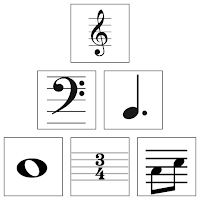Building Blocks: Keys
Most of the music we hear and play (at least in the western world) is tonal in nature. "Tonal" means that the music has a "home" note or chord, which we call the "tonic". The tonic is based on a key (for example, "key of F Major", or "key of C Minor", etc).
There are 12 notes in our music system, represented by the chromatic scale. Remember how a major scale uses 7 of these notes (8 notes if you count the repeated tonic at the top)? These 7 notes are the "main" notes that make up a key, and these notes are typically called "diatonic" notes. The other 5 notes that aren't part of the 7 "main" notes are typically called "chromatic" or "non-diatonic". Musicians may use any of the 12 notes in a piece of music, however if they intend to establish the feeling of being in a key or "home", they will focus on the diatonic notes rather than the chromatic notes.
One important distinction I want to make here is the difference between scales and keys. I've found that many people tend to confuse these two things. Scales and keys are not the same thing. A "scale" is a set of notes that follows a specific pattern of steps, or intervals. A "key" is the note that feels most like home in a piece of music.
If you have any questions, post them in the comments below!

Comments
Post a Comment
Feel free to ask questions or start a discussion, or leave a suggestion for future articles! Please keep it civil.